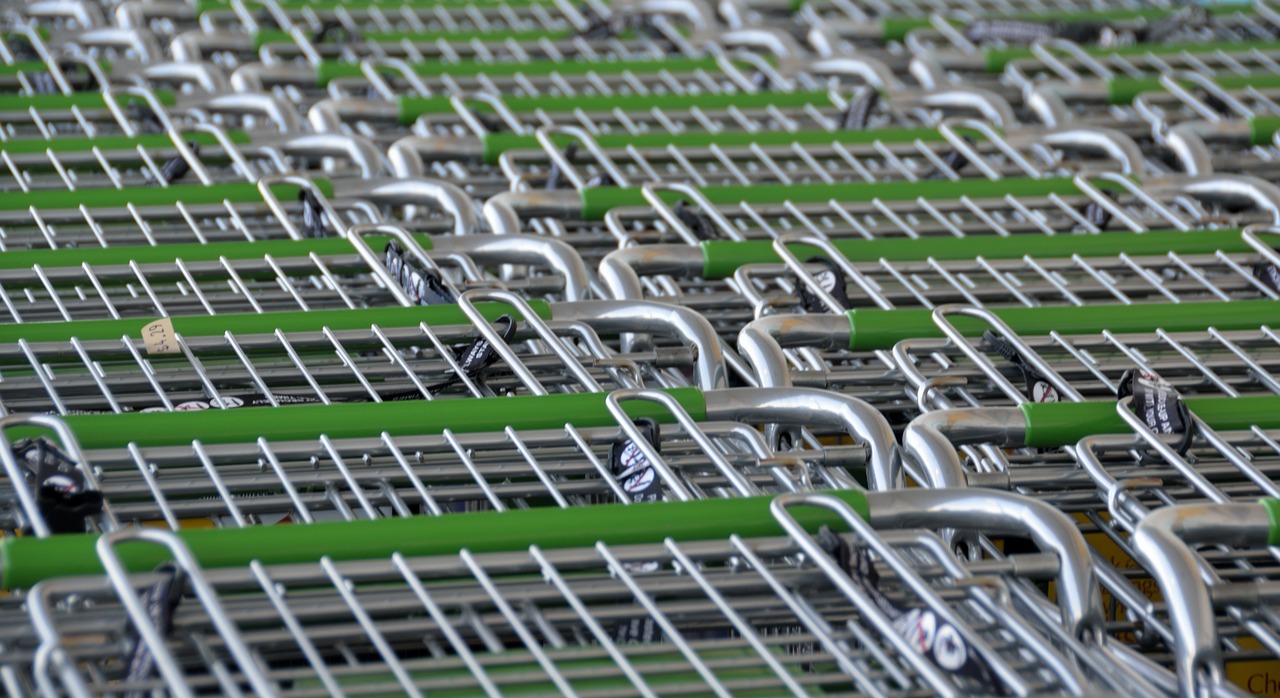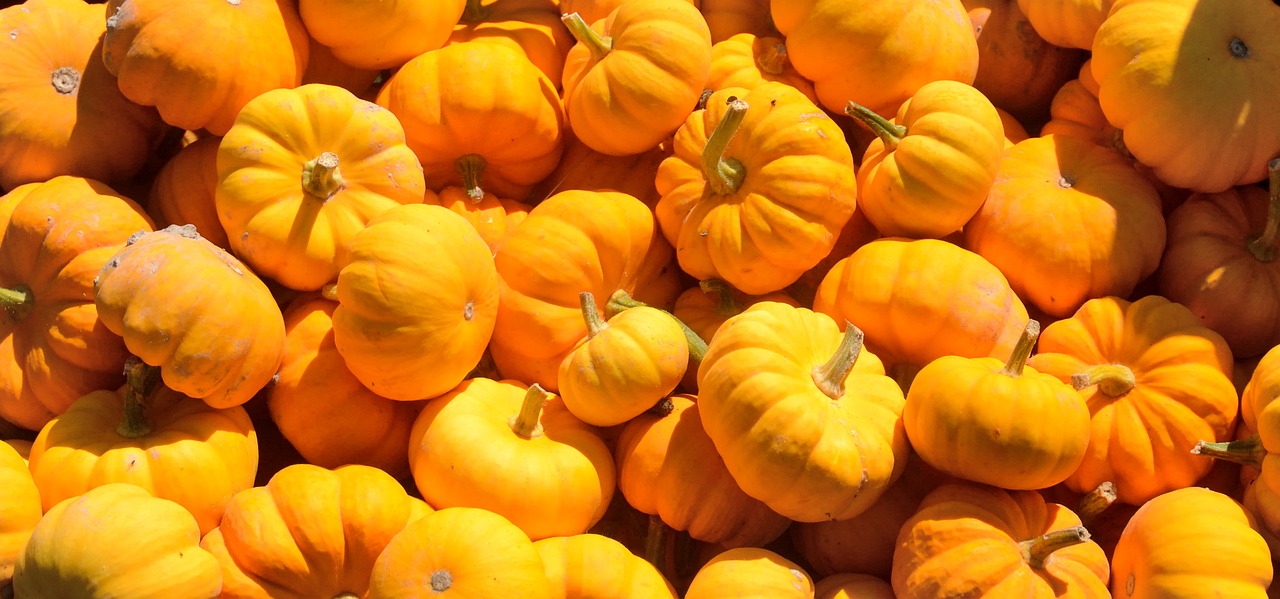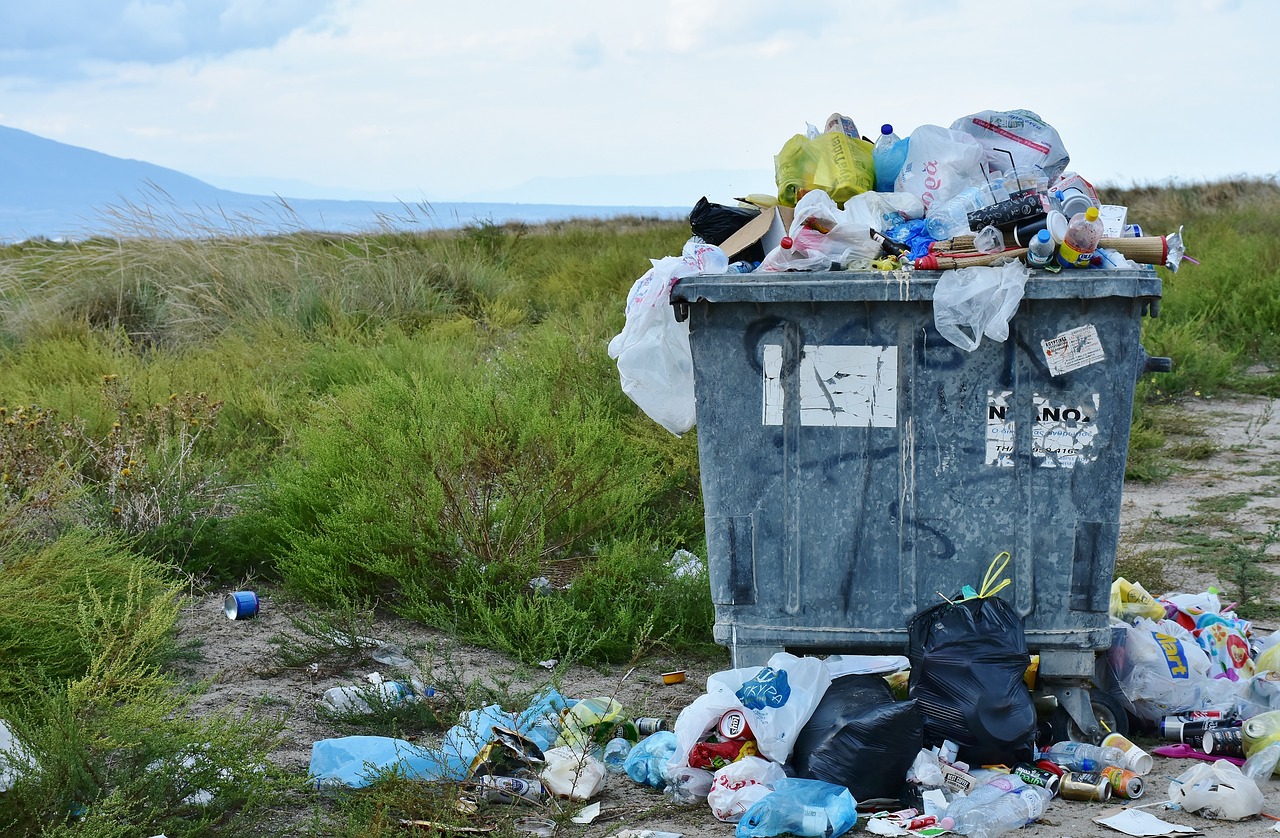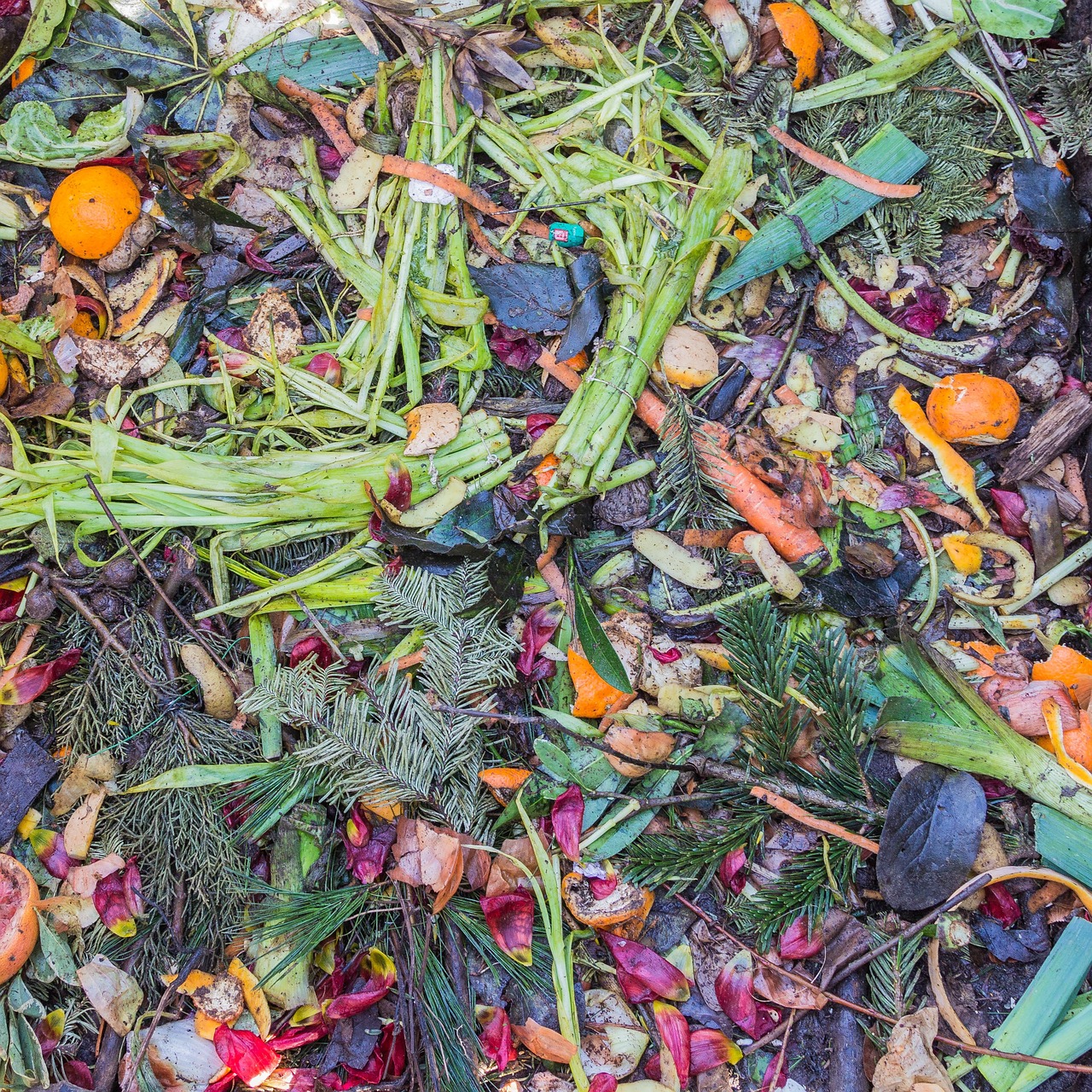How to Reduce Your Food Waste?
Reducing food waste isn't just a trendy topic; it's a necessity in today's world. Every year, millions of tons of food go to waste, and this not only affects our wallets but also the planet. Imagine throwing away a bag of money every time you toss out spoiled food! That's essentially what's happening when we waste food. This article dives deep into effective strategies you can adopt to minimize food waste, helping you save money while contributing to a more sustainable environment. Are you ready to embark on this journey toward a greener lifestyle?
Food waste is a global issue that has significant environmental and economic impacts. According to the Food and Agriculture Organization (FAO), approximately one-third of all food produced for human consumption is wasted. That's about 1.3 billion tons of food every year! This staggering statistic highlights the importance of addressing food waste in our daily lives. The causes of food waste are varied—ranging from over-purchasing and poor meal planning to misunderstanding expiration dates and improper storage. Each of us plays a role in this cycle, and understanding it is the first step toward making a change.
Meal planning is a crucial step in reducing food waste. By taking the time to plan your meals for the week, you can ensure that you use ingredients efficiently and minimize leftovers. Think of meal planning as a treasure map; it guides you through the week, ensuring you make the most of what you have. Start by checking what’s already in your pantry and fridge. This helps you avoid buying duplicates and encourages creativity in using up what you already have.
A well-structured shopping list can prevent impulse buys and over-purchasing. When you create your shopping list, align it with your meal plans. This not only helps you stay focused while shopping but also reduces the chance of buying unnecessary items. Consider categorizing your list by food type or meal to streamline the process. For example, group together fruits, vegetables, dairy, and proteins. This way, you won’t find yourself wandering the aisles, tempted by items that weren't on your radar.
Budgeting for groceries not only saves money but also helps in reducing waste. To set a budget effectively, start by tracking your spending for a month. Once you have a clear picture, you can allocate a reasonable amount for each week. Remember, sticking to your budget is like a game—set rules for yourself, and reward your achievements. For instance, if you manage to stay within your budget for a month, treat yourself to a nice meal out!
Seasonal produce is often fresher and lasts longer, which means it’s less likely to end up in the trash. When you choose fruits and vegetables that are in season, you're not only supporting local farmers but also enjoying food at its peak flavor and nutritional value. For example, summer is the perfect time for juicy tomatoes and berries, while fall brings hearty squash and apples. Check your local farmer’s market or grocery store for what’s in season in your area, and plan your meals around these ingredients.
Storing food correctly can significantly extend its shelf life. Did you know that the way you store your fruits and vegetables can affect how long they last? For instance, apples emit ethylene gas, which can cause other fruits to ripen and spoil faster. To prevent this, store apples separately in the fridge. Additionally, consider using airtight containers for grains and cereals to keep them fresh longer. By understanding the best storage practices, you can help your food last longer and reduce waste.
Transforming leftovers into new meals is an excellent way to reduce waste. Instead of viewing leftovers as a chore, think of them as an opportunity for creativity in the kitchen. For example, yesterday's roasted vegetables can be blended into a delicious soup, or stale bread can be turned into croutons or a bread pudding. By getting inventive, you not only reduce waste but also discover new favorite dishes!
Freezing is a great way to extend the life of meals. When you freeze leftovers, make sure to use airtight containers or freezer bags to prevent freezer burn. Label each container with the date and contents, so you can easily find what you need later. When it's time to thaw, do it safely in the refrigerator or microwave to maintain the quality of the food. This simple practice can save you time and money while keeping food waste at bay.
Composting is an eco-friendly way to dispose of food scraps. Instead of tossing vegetable peels and coffee grounds in the trash, consider starting a compost bin at home. Composting not only reduces the amount of waste that ends up in landfills but also creates nutrient-rich soil for your garden. It's like turning garbage into gold! To start composting, you can use a simple bin in your backyard or even a countertop composting system for smaller spaces. The benefits for the environment—and your garden—are immense!
- What is food waste? Food waste refers to food that is discarded, lost, or uneaten. This includes food that is thrown away, spoiled, or not consumed.
- How can I start meal planning? Begin by checking what you have at home, then create a weekly menu based on those ingredients. Make a shopping list to avoid impulse buys.
- Is composting difficult? Not at all! Composting can be as simple as collecting food scraps in a bin and allowing them to decompose over time.
- Can I freeze all types of food? Most cooked foods freeze well, but some raw foods, like lettuce, may not maintain their texture after thawing.

Understanding Food Waste
Food waste is not just a minor inconvenience; it's a **global crisis** that affects our environment, economy, and society. Every year, approximately 1.3 billion tons of food are wasted worldwide, which is enough to feed billions of people. This staggering statistic highlights the urgency of addressing food waste in our daily lives. But what exactly causes this waste? From over-purchasing groceries to misunderstanding expiration dates, several factors contribute to the problem.
One major culprit is the **disconnect** between consumers and the food they buy. Many people tend to buy more food than they need, often driven by marketing tactics or the fear of running out. This leads to a surplus of perishable items that end up in the trash. Additionally, cultural norms surrounding food presentation can lead to perfectly edible food being discarded simply because it doesn't meet aesthetic standards. For instance, fruits and vegetables that are misshapen or slightly blemished often go uneaten, despite being just as nutritious as their perfect counterparts.
Moreover, the impact of food waste stretches beyond just the food itself. When food decomposes in landfills, it produces methane, a potent greenhouse gas that contributes to climate change. In fact, food waste is responsible for about 8-10% of global greenhouse gas emissions. This is a staggering figure that underscores the importance of reducing food waste not only for our wallets but for the planet as well.
To truly grasp the importance of tackling food waste, consider this: if we could reduce food waste by just 25%, it would be enough to feed over 870 million hungry people around the world. This statistic serves as a powerful reminder that the issue of food waste is not just about excess; it's about **sustainability**, **responsibility**, and **compassion** for those in need.
Understanding food waste is the first step towards making a change. By being aware of the causes and consequences, we can take actionable steps to minimize our waste. So, how can we begin this journey? The answer lies in planning, education, and a commitment to making informed choices. In the following sections, we will explore practical strategies to help you reduce food waste at home, turning the tide towards a more sustainable lifestyle.

Planning Your Meals
Meal planning is more than just a trendy buzzword; it's a game-changer when it comes to reducing food waste. Imagine walking into your kitchen, opening the fridge, and seeing a well-organized array of ingredients waiting to be transformed into delicious meals. Sounds dreamy, right? By planning your meals, you not only save time and money but also contribute significantly to a more sustainable lifestyle. When you know what you’re cooking for the week, you can buy only what you need, which means fewer impulse purchases and less food that ends up in the trash.
So, how do you get started with meal planning? First, take a good look at what you already have in your pantry and fridge. This is your golden opportunity to use up items that might be nearing their expiration date. You can create meals around these ingredients, ensuring they don’t go to waste. For instance, if you have a couple of ripe tomatoes and some wilting spinach, why not whip up a hearty pasta dish or a fresh salad? The key is to be resourceful and creative.
Next, consider your weekly schedule. Are there days when you know you’ll be too busy to cook? Plan for those days by preparing meals in advance or opting for quicker recipes. This not only prevents last-minute takeout but also helps you stick to your meal plan. Don't forget to include some flexibility in your planning. Life happens, and sometimes you might find yourself with unexpected leftovers or a change in plans. Having a few go-to recipes that can adapt to whatever ingredients you have on hand can be a lifesaver.
Now, let’s talk about creating a shopping list. A well-structured shopping list is your best friend in this journey. It keeps you focused and prevents those sneaky impulse buys that often lead to food waste. When crafting your list, be sure to categorize items based on your meal plan. For example, group together fruits and vegetables, dairy, grains, and proteins. This not only makes your shopping trip more efficient but also helps you visualize what you need and what you already have at home.
Another crucial aspect of meal planning is sticking to your budget. When you set a grocery budget, you’re not just saving money; you’re also encouraging mindful purchasing. Consider using a simple table to track your expenses:
| Item | Estimated Cost | Actual Cost |
|---|---|---|
| Fruits and Vegetables | $20 | |
| Dairy | $10 | |
| Grains | $15 | |
| Proteins | $25 | |
| Total | $70 |
By filling in the actual costs as you shop, you’ll have a better understanding of where your money goes and how to adjust your future meal plans accordingly. Plus, budgeting can be a fun challenge, almost like a game where you try to beat your previous week’s spending!
Lastly, don't forget to choose seasonal produce when planning your meals. Seasonal fruits and vegetables are not only more affordable but also fresher and tastier. They tend to last longer, reducing the chances of spoilage. You can check local farmers' markets or grocery stores for what’s in season in your area. Incorporating these fresh ingredients into your meal plan will make your dishes vibrant and delicious while supporting local agriculture.
In conclusion, meal planning is a powerful tool in the fight against food waste. By being intentional about what you cook and how you shop, you can make a significant impact on your household waste and your wallet. So, roll up your sleeves, get creative, and start planning those meals!
Q: How often should I plan my meals?
A: It’s best to plan your meals weekly, but you can adjust based on your schedule and preferences. Some people prefer to plan bi-weekly or even monthly.
Q: What if I don’t stick to my meal plan?
A: That’s okay! Life happens. Just try to adapt and use what you have on hand. The goal is to minimize waste, not to be perfect.
Q: Can meal planning really save me money?
A: Absolutely! By planning meals and sticking to a shopping list, you’re less likely to buy unnecessary items and more likely to use what you already have.

Creating a Shopping List
Creating a shopping list is like crafting a roadmap for your culinary adventures. It guides you through the aisles of the grocery store, ensuring you don’t veer off course into the tempting territory of impulse buys. Think about it: how many times have you wandered into a store with a vague idea of what you need, only to leave with a cart full of items you didn’t plan for? That’s a recipe for both food waste and a lighter wallet!
To create an effective shopping list, start by reviewing your meal plans for the week. This is where the magic happens! By knowing what meals you’re going to prepare, you can identify the specific ingredients you need. It’s like going to battle with a shield – you’re armed with knowledge, and that makes all the difference. As you jot down your list, group similar items together. For example, keep all your produce in one section and dairy in another. This not only saves time but also helps you avoid backtracking through the store.
Here are some additional tips to enhance your shopping list strategy:
- Stick to the List: Once you’ve crafted your masterpiece, try to stick to it! Those flashy promotions and ‘buy one, get one free’ deals can be enticing, but they often lead to purchasing items you don’t really need.
- Use Technology: Consider using a shopping list app on your phone. Many apps allow you to categorize items and even share lists with family members. No more forgotten items or miscommunication!
- Check Your Pantry: Before you head out, take a quick inventory of what you already have at home. This can prevent duplicate purchases and help you use up ingredients that might otherwise go to waste.
Ultimately, a well-structured shopping list not only saves you money but also plays a crucial role in reducing food waste. By purchasing only what you need, you’re making a conscious effort to be more sustainable. So, the next time you prepare to hit the grocery store, remember: your shopping list is your best friend. Treat it well, and it will treat you well in return!

Sticking to Your Budget
Sticking to a budget when it comes to groceries can feel like trying to swim upstream, but it's a crucial part of reducing food waste while saving some cash! Imagine walking into a grocery store with a clear plan—it's like having a treasure map leading you to the gold. The first step to sticking to your budget is to set a realistic limit based on your income and expenses. Start by tracking your spending for a month or two to understand where your money goes. This will help you identify areas where you can cut back.
Once you have a budget in mind, consider using a simple budgeting method. One effective approach is the 50/30/20 rule, where 50% of your income goes to necessities (like groceries), 30% to wants, and 20% to savings. For groceries, try to allocate a specific percentage of your budget to food shopping. This way, you won’t overspend on food and can dedicate funds to other important areas of your life.
Another great strategy is to keep a grocery journal. This can be a small notebook or an app on your phone where you jot down your grocery expenses. Each time you buy something, write it down. This not only keeps you accountable but also helps you see patterns in your spending. Are you buying too many snacks? Are those impulse buys creeping in? Over time, you'll get a clearer picture of your habits and can make adjustments as needed.
When you go shopping, stick to your list. A well-structured shopping list is your best friend! It prevents you from wandering the aisles and picking up items you don’t need, which can easily lead to overspending. Make your list based on your meal plan and stick to it like glue. If you find yourself tempted by a flashy sale or a new product, ask yourself: “Do I really need this, or is it just a want?”
Additionally, consider shopping with a purpose. Try to shop only once a week, or even bi-weekly if you can. This not only reduces the number of times you’re tempted to spend but also gives you a chance to use up what you already have at home. You’d be surprised how many meals you can whip up with just a few ingredients you already have in your pantry!
Lastly, don't forget to take advantage of coupons and discounts. Many stores offer loyalty programs that can save you money over time. Look for sales on items you regularly buy and stock up on non-perishables when they’re on sale. Just remember to check expiration dates and only buy what you know you’ll use. It’s all about being smart with your purchases!
By sticking to your budget, not only do you save money, but you also play a vital role in reducing food waste. It’s a win-win situation! The more you plan and track your spending, the more you’ll find yourself creatively using what you have, leading to fewer leftovers and less waste. So, grab that grocery list, set your budget, and let’s make a difference—one meal at a time!
- How can I effectively track my grocery spending? Consider using a budgeting app or a simple notebook to jot down your expenses. This will help you stay accountable and aware of your spending habits.
- What should I do if I go over budget? Analyze where you overspent and adjust your budget accordingly for the next month. Try to identify triggers that led to the overspending.
- Are there specific apps that can help with meal planning? Yes! There are many apps available that can assist with meal planning and grocery budgeting. Some popular ones include Mealime, Yummly, and AnyList.
- How can I avoid impulse buys while shopping? Stick to your shopping list, shop with a full stomach, and try to limit your shopping trips to once a week.

Choosing Seasonal Produce
When it comes to reducing food waste, one of the most effective strategies is to focus on seasonal produce. But why is this so important? Seasonal fruits and vegetables are not only fresher and tastier, but they also have a lower environmental impact. When you choose produce that’s in season, you’re supporting local farmers and reducing the carbon footprint associated with transporting out-of-season fruits and vegetables from distant locations.
Imagine biting into a juicy, sun-ripened tomato in the summer versus a mealy, flavorless one in the winter. The difference is night and day! Seasonal produce is harvested at its peak, which means it’s packed with flavor and nutrients. Additionally, because these crops are abundant, they are often less expensive, allowing you to save money while enjoying delicious meals. For instance, during the fall, you might find apples and pumpkins at a fraction of the cost compared to mid-summer when they are less available.
Here are some key benefits of choosing seasonal produce:
- Better Taste: Seasonal fruits and vegetables are harvested at their peak ripeness, resulting in superior flavor.
- Cost-Effective: In-season produce is usually cheaper due to its abundance, making it easier to stick to your grocery budget.
- Environmental Impact: Reduced transportation and storage means a smaller carbon footprint, contributing to a more sustainable food system.
- Nutritional Value: Freshly harvested produce retains more nutrients, providing you with healthier options.
To make the most of seasonal produce, consider creating a seasonal produce calendar for your area. This can help you plan your meals around what’s available, ensuring that you’re always eating the freshest ingredients. Below is a simple table to illustrate what fruits and vegetables are typically in season during different times of the year:
| Season | Fruits | Vegetables |
|---|---|---|
| Spring | Strawberries, Cherries, Apricots | Asparagus, Spinach, Peas |
| Summer | Tomatoes, Peaches, Berries | Bell Peppers, Zucchini, Corn |
| Fall | Apples, Pears, Grapes | Pumpkins, Squash, Brussels Sprouts |
| Winter | Citrus Fruits, Pomegranates | Root Vegetables, Cabbage, Kale |
By incorporating seasonal produce into your meals, you not only enhance your culinary experience but also play a significant role in reducing food waste. You’ll find that using what’s in season makes cooking exciting and helps you develop a deeper connection with the food you eat. So next time you’re at the grocery store or farmers' market, remember to check for what’s in season and let your taste buds enjoy the best nature has to offer!
Q: How do I know what produce is in season?
A: You can check local farmers' markets, grocery stores, or online seasonal produce guides specific to your area to find out what fruits and vegetables are currently in season.
Q: Are there any disadvantages to eating seasonal produce?
A: While seasonal produce is generally fresher and more affordable, it may not always be available year-round. However, you can plan your meals accordingly and enjoy a variety of foods throughout the year.
Q: Can I still eat out-of-season produce?
A: Yes, you can still enjoy out-of-season produce, but be mindful of the increased cost and environmental impact. Aim to balance your diet by focusing on seasonal options whenever possible.

Proper Food Storage Techniques
This article explores effective strategies to minimize food waste, offering practical tips for individuals and households to contribute to a more sustainable environment while saving money.
Food waste is a global issue with significant environmental and economic impacts. This section discusses the causes and statistics surrounding food waste, highlighting its importance in our daily lives.
Meal planning is a crucial step in reducing food waste. Here, we provide tips on how to create effective meal plans that utilize ingredients efficiently and minimize leftovers.
A well-structured shopping list can prevent impulse buys and over-purchasing. This subsection offers advice on how to craft a list that aligns with your meal plans.
Budgeting for groceries not only saves money but also helps in reducing waste. Learn strategies to set and adhere to a budget effectively.
Seasonal produce is often fresher and lasts longer. This section emphasizes the benefits of selecting fruits and vegetables that are in season.
Storing food correctly can significantly extend its shelf life and reduce the chances of spoilage. Think of food storage as a protective shield, safeguarding your groceries from the perils of time and environmental factors. One of the most effective ways to ensure your food remains fresh is to understand the specific storage requirements of different types of items. For instance, did you know that some fruits, like apples and bananas, emit ethylene gas that can hasten the ripening of other produce? Keeping them separate can help maintain the freshness of your other fruits and vegetables.
Here are some essential tips for proper food storage:
- Use Airtight Containers: Invest in quality airtight containers to keep your pantry items, leftovers, and snacks fresh longer. This is particularly important for items like flour, sugar, and grains, which can attract pests if left exposed.
- Label and Date: When you store leftovers or freeze meals, always label them with the contents and the date. This simple step ensures you use items before they spoil, reducing waste significantly.
- Temperature Matters: Store perishables like dairy, meat, and eggs in the coldest part of your refrigerator. Keep your fridge at or below 40°F (4°C) to slow down bacterial growth.
- Know Your Produce: Some fruits and vegetables do best in the fridge, while others thrive at room temperature. For example, tomatoes and potatoes should be stored in a cool, dark place, while leafy greens benefit from a crisp, cold environment.
Additionally, consider using a food storage chart to help you remember how long different foods last. Below is a simple table that summarizes the shelf life of common items:
| Food Item | Refrigerator Shelf Life | Freezer Shelf Life |
|---|---|---|
| Chicken (raw) | 1-2 days | 1 year |
| Beef (raw) | 3-5 days | 6-12 months |
| Fruits (berries) | 3-7 days | 8-12 months |
| Vegetables (leafy greens) | 3-7 days | 10-12 months |
| Cooked leftovers | 3-4 days | 2-6 months |
By implementing these proper food storage techniques, you can significantly reduce the amount of food that goes to waste in your home. Remember, the goal is not just to preserve your food but also to make the most out of every ingredient you purchase. So, next time you bring groceries home, think about how you can store them wisely to enjoy their full potential.
Transforming leftovers into new meals is an excellent way to reduce waste. This section provides innovative recipes and ideas for repurposing leftover ingredients.
Freezing is a great way to extend the life of meals. Here, we discuss best practices for freezing and thawing food safely.
Composting is an eco-friendly way to dispose of food scraps. This subsection explains how to start composting at home and its benefits for the environment.
Q: What are some common foods that are wasted the most?
A: Some of the most commonly wasted foods include bread, fruits and vegetables, dairy products, and cooked meals. Being mindful of portion sizes and meal planning can help reduce this waste.
Q: How can I tell if food is still good to eat?
A: Check for signs of spoilage such as off smells, unusual textures, or discoloration. When in doubt, it's better to err on the side of caution and discard questionable food items.
Q: Can I compost all food scraps?
A: Most food scraps can be composted, but avoid composting meat, dairy, and oils as they can attract pests. Instead, focus on fruits, vegetables, coffee grounds, and eggshells.

Creative Leftover Solutions
Transforming leftovers into new meals is not just a clever way to reduce food waste; it's a culinary adventure waiting to happen! Think of your leftover food as a treasure trove of ingredients, just waiting to be reimagined. Instead of viewing them as yesterday's meals, consider them the building blocks for today's creativity. Whether it's a few vegetables, some rice, or even that half-eaten roast, the possibilities are endless. Why not take your leftover spaghetti and turn it into a delicious frittata? Or transform those wilting greens into a vibrant pesto? The key is to embrace the challenge and let your imagination run wild!
One fantastic way to get started is by exploring various recipes that specifically cater to using leftovers. For instance, you can create a stir-fry with leftover proteins and vegetables, or a hearty soup that incorporates various odds and ends. The beauty of these meals is that they are not only economical but also allow you to experiment with flavors and textures. You might just stumble upon a new family favorite!
Another innovative approach is to think about freezing your leftovers. Freezing can be a lifesaver when it comes to preserving meals for later. Just imagine having a homemade lasagna or a comforting curry ready to go on a busy weeknight! To ensure the best quality, it's essential to follow some simple guidelines:
| Leftover Type | Freezing Tips |
|---|---|
| Soups & Stews | Cool them completely before transferring to airtight containers. |
| Cooked Grains | Spread them out on a baking sheet to cool, then portion into bags. |
| Meats | Wrap tightly in foil or freezer bags to prevent freezer burn. |
| Vegetables | Blanch before freezing to maintain color and nutrients. |
Lastly, consider composting food scraps as a sustainable way to deal with leftovers that can't be repurposed. Not only does composting reduce waste, but it also enriches your garden soil, creating a cycle of nourishment. If you're new to composting, starting is as simple as setting up a bin in your backyard or even using a compost pail in your kitchen. You can compost items like vegetable peels, coffee grounds, and eggshells, turning what would be waste into valuable compost for your plants.
In conclusion, the next time you find yourself staring at a fridge full of leftovers, remember that you're not just looking at what remains; you're looking at a world of potential. By embracing creativity, utilizing freezing techniques, and considering composting, you can significantly reduce food waste while enjoying delicious and unique meals. So roll up your sleeves, get inventive, and make those leftovers work for you!
Q: What can I do with leftover rice?
A: Leftover rice can be transformed into fried rice, rice pudding, or even added to soups for extra texture. The options are endless!
Q: How long can I keep leftovers in the fridge?
A: Generally, leftovers can be safely stored in the fridge for 3 to 4 days. If you're not planning to eat them within that time, consider freezing them.
Q: Can I compost cooked food?
A: While it's best to compost raw food scraps, some cooked foods can be composted in moderation. Check local guidelines for specifics.
Q: What's the best way to reheat leftovers?
A: Reheating leftovers in the oven or on the stovetop is often the best way to maintain texture and flavor, although microwaving is quick and convenient.

Freezing Leftovers
Freezing leftovers is like hitting the pause button on your meals, allowing you to savor them later without the worry of spoilage. Imagine this: you’ve just whipped up a delicious casserole or a hearty soup, but there’s too much to finish in one sitting. Instead of letting those tasty morsels go to waste, you can simply freeze them! This method not only saves food but also saves you time and money in the long run.
When it comes to freezing, the key is to do it right to maintain flavor and texture. First, let your leftovers cool down to room temperature. This step is crucial because placing hot food directly into the freezer can raise the temperature inside, potentially causing other food to thaw and spoil. Once cooled, consider portioning your leftovers into individual servings. This makes it easier to defrost just what you need later on, minimizing waste even further.
Next, invest in some good-quality freezer-safe containers or resealable bags. You want to ensure that your food is well-protected from freezer burn, which can ruin the taste and texture of your meals. Be sure to label each container with the name of the dish and the date it was frozen. This simple practice helps you keep track of what you have and when it needs to be consumed. After all, you don’t want to discover a mystery meal lurking in the back of your freezer six months down the line!
Here’s a quick overview of the best practices for freezing leftovers:
- Cool Down: Let food cool to room temperature before freezing.
- Portion Control: Divide meals into single servings for easy thawing.
- Quality Containers: Use freezer-safe containers or bags to prevent freezer burn.
- Labeling: Always label your containers with the name and date.
When you’re ready to enjoy your frozen leftovers, the defrosting process is just as important. The safest way to thaw food is in the refrigerator overnight. This method keeps the food at a safe temperature and maintains its quality. If you’re in a hurry, you can also use the microwave or submerge the sealed bag in cold water, but be sure to cook it immediately after thawing to avoid any bacterial growth.
In conclusion, freezing leftovers is a practical and effective strategy to reduce food waste. By following these simple steps, you can enjoy your favorite meals without the stress of them going bad. Plus, it makes meal prep for busy days a breeze! Just remember, every time you freeze a meal, you’re not just saving food; you’re also contributing to a more sustainable lifestyle.
- How long can I keep leftovers in the freezer? Generally, leftovers can be stored in the freezer for 3-6 months, depending on the type of food.
- Can I freeze any type of food? Most cooked foods freeze well, but some items, like certain vegetables and dairy products, may not retain their texture after freezing.
- Is it safe to refreeze thawed leftovers? It’s safe to refreeze thawed leftovers if they were thawed in the refrigerator, but it’s best to only do this once to ensure quality.

Composting Food Scraps
Composting food scraps is not just a trendy buzzword; it's a transformative practice that can turn your kitchen waste into a valuable resource for your garden. Imagine taking those apple cores, coffee grounds, and vegetable peels and giving them a second life! Instead of sending them off to a landfill where they contribute to greenhouse gas emissions, you can create nutrient-rich compost that enriches your soil and helps your plants thrive. So, how do you get started?
First, it's essential to understand what can and cannot be composted. Generally, you can compost:
- Fruit and vegetable scraps
- Coffee grounds and filters
- Eggshells
- Grass clippings and yard waste
- Shredded paper and cardboard
However, there are some items you should avoid, like meat, dairy, and oily foods, as they can attract pests and create unpleasant odors. The beauty of composting lies in its simplicity. You don’t need to be a gardening expert to make it work! Just gather your scraps, find a suitable container (a compost bin or even a simple pile in your backyard), and start layering your materials. The key is to maintain a balance between green materials (like fruit scraps and grass clippings) and brown materials (like dried leaves and cardboard).
Next, let's talk about the benefits of composting. Not only does it help reduce food waste, but it also:
- Improves soil structure and fertility
- Reduces the need for chemical fertilizers
- Helps retain moisture in the soil
- Encourages beneficial microorganisms
By composting, you're not just helping your garden; you're also making a positive impact on the environment. It’s like giving Mother Nature a big hug! Plus, you’ll save money on fertilizers and contribute to a more sustainable lifestyle.
For those who live in apartments or don’t have outdoor space, fear not! There are indoor composting solutions available, such as worm bins or Bokashi composting, which can fit right in your kitchen. These methods allow you to compost even in small spaces, proving that anyone can be a part of the solution.
In conclusion, composting food scraps is a simple yet effective way to reduce your food waste and make a difference. It’s a small step for you, but a giant leap for the planet. So grab those scraps and start composting today!
Q: What can I compost?
A: You can compost fruit and vegetable scraps, coffee grounds, eggshells, and yard waste. Avoid meat, dairy, and oily foods.
Q: How long does it take to compost?
A: Depending on the method used, composting can take anywhere from a few weeks to several months. Regularly turning your compost can speed up the process.
Q: Can I compost in an apartment?
A: Yes! Indoor composting options like worm bins and Bokashi composting are perfect for small spaces.
Q: Is composting difficult?
A: Not at all! Composting is simple and can be done by anyone, regardless of gardening experience.
Frequently Asked Questions
- What are some common causes of food waste?
Food waste often stems from over-purchasing, poor meal planning, and improper food storage. Many people buy more than they need, leading to spoilage before items can be consumed. Additionally, lack of awareness about expiration dates and how to store food correctly can contribute to waste.
- How can I effectively plan my meals to reduce waste?
Start by creating a weekly meal plan that utilizes ingredients across multiple meals. This way, you can ensure that nothing goes to waste. Additionally, make a shopping list based on your meal plan to avoid impulse buys and stick to purchasing only what you need.
- What are some tips for proper food storage?
To extend the shelf life of your food, store items in airtight containers and keep them in the right environment, such as the refrigerator or freezer. For fruits and vegetables, learn which ones should be kept together and which should be stored separately to prevent spoilage.
- Can I freeze leftovers, and how should I do it?
Absolutely! Freezing leftovers is a fantastic way to reduce waste. Make sure to cool the food completely before transferring it to a freezer-safe container. Label the container with the date and contents, so you can easily identify it later. When you're ready to eat, thaw it in the fridge overnight or use the microwave for quicker results.
- What is composting, and how can I start?
Composting is the process of recycling organic waste, such as food scraps and yard waste, into a valuable fertilizer for your garden. To start composting, you can create a compost bin in your backyard or use a composting system indoors. Just be sure to include a mix of green materials (like fruit scraps) and brown materials (like dry leaves) to achieve the best results.
- How does reducing food waste benefit the environment?
Reducing food waste helps decrease the amount of waste sent to landfills, which in turn reduces greenhouse gas emissions. Additionally, it conserves the resources used in food production, such as water and energy, making it a win-win for both the planet and your wallet.



















